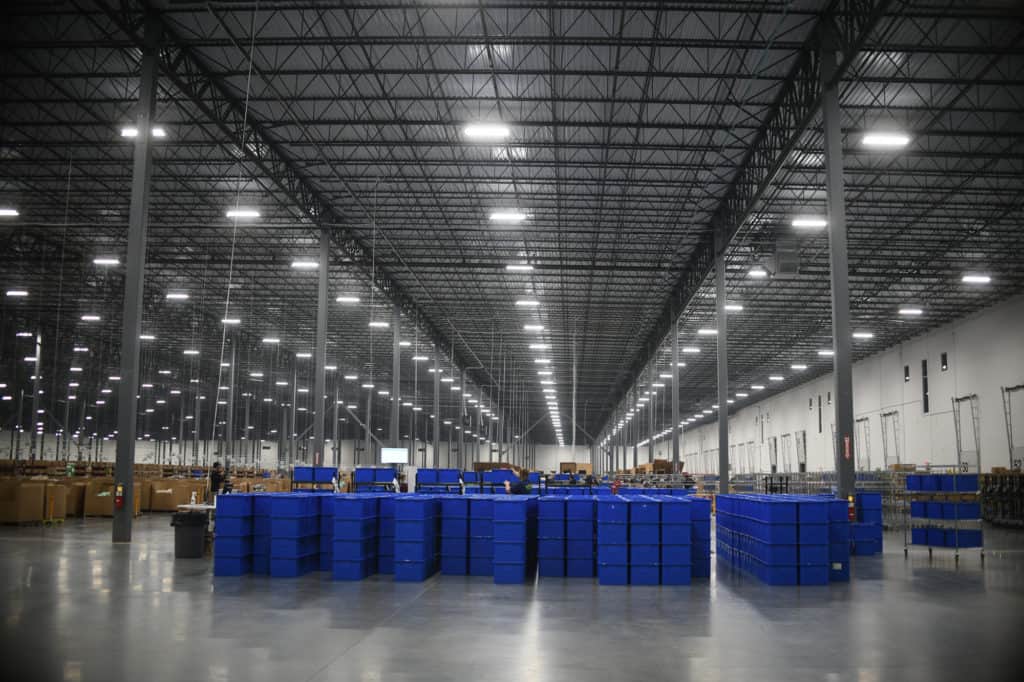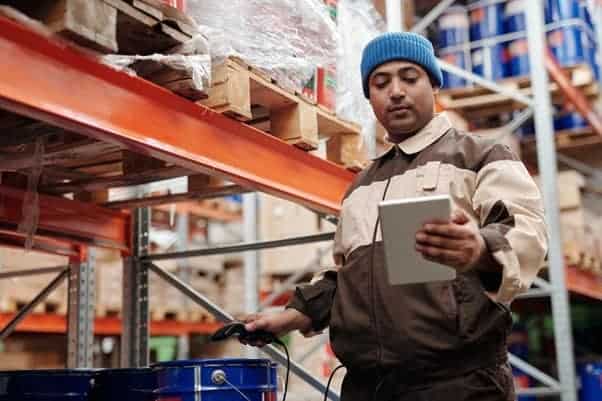Fulfillment centers around the country face pressure to deliver goods faster than ever. This is largely in response to the rise of e-commerce merchants and an increased demand by consumers for just-in-time ordering. Many fulfillment operators find themselves investigating or turning to Goods-to-Person (GTP) systems to meet those needs.
The traditional method of filling orders, called Person-to-Goods fulfillment (PTG), typically involves sending workers to different zones to find products to match SKUs. That means lots of non value-added walking back and forth by an associate. Newer methodologies assign workers to one zone to cut down on both foot and equipment traffic, which results in some productivity gains, but doesn’t go far enough to meet the needs of today’s customer expectations and warehouse operation productivity goals.

GTP fulfillment removes much of the walking and human intervention from the process, resulting in error reduction as well as efficiency gains. AS/RS (Automated Storage and Retrieval Systems) retrieve goods from shelves and deliver them to an order picker’s workstation, placing items in assigned SKU totes or trays, depending on size. Goods to person autonomous mobile robots (AMR) move pods (shelves) to a pick and pack station. As a result, both AS/RS and GTP AMR substantially reduce, but not totally remove, foot traffic and walking, and they also substantially increase productivity rates.
Understanding both the benefits and drawbacks of a Goods-to-Person fulfillment system makes the difference between successful implementation or costly setbacks. Make sure you as a manager think through all contingencies involved in setting up this type of process.
- Process matters
- Have a backup plan
- Think about scalability
- Consider your space capacity
- Plan for how you operate while the goods-to-person system is being deployed
- Consider how your business might change in the future
- Have enough capital on hand
- Take employees into account
1. Process matters
Conduct a thorough inspection of all your warehouse operations. Gather all the data you can about how much inventory you go through every day, the average time you have to send orders out and how much actual improvement you expect to see once everything is in place.
The GTP system you end up purchasing should be suited for your processes. Don’t bypass the process of carefully evaluating and comparing systems, or you could end up with something difficult to manage that only adds delays to your attempts to fill orders.
Other factors to consider:
- Current SKU velocity
- Average units per order
- Expected percentage of accuracy improvement
- Security requirements
- Space requirements
- Energy demands of the system
2. Have a backup plan
A well-implemented GTP system runs seamlessly and automates pretty much every step of the process. But no system is infallible. Think about the following when evaluating GTP systems:
- What is the failure rate for this product?
- How quickly can automated processes be up and running again?
- Is there a way to manually keep things going in case of mechanical or software failure?
Customers will continue placing new orders regardless of any issues you’re dealing with. Make sure your business isn’t brought to a standstill when something malfunctions.
3. Think about scalability
One of the benefits of a GTP system is its ability to meet a warehouse’s peak demand. Look for a system that gives you independence on how to manage your throughput and inventory. Account for how things run at the beginning and throughout the life of your Goods-to-Person solution.
GTP makes it simple for your AS/RS system to manage new aisles and related workstations. Make sure you’re prepared for any additional capital that you might need to invest in supporting your future growth or evolving business needs.
4. Consider your space capacity
Are you looking to go up? GTP systems give you an unmatched ability to expand vertically. Some systems allow you to expand as high as 100 feet. Consider how much benefit you’d gain from this system based on the current height limits of your building. Compare the costs of rack supported mezzanine floor with alternative picking methods to the capital expense of goods to person
Do you want to optimize your use of limited space in a smaller structure? Your GTP process should be adaptable to your floor capacity. This benefits those companies looking to shrink their real estate costs by moving into smaller urban building putting them closer to prime customer delivery areas.
5. Have enough capital on hand
The initial expenses involved in operating a well-maintained GTP system can be 100 times that of a manual one. The hope is that difference in initial costs gets offset by the ROI available due to reduced labor needs, increased efficiency across all processes and savings from better space utilization and lifecycle management. Talk to your peers at other companies about their GTP experiences and how what they plan for their next greenfield and brownfield projects.
6. Plan for how you operate while the goods-to-person system is being deployed
Traditional warehouse automation is perceived to be expensive, intrusive and disruptive, taking years to implement. When considering a project you need to plan for how existing operations will be affected. What infrastructure do you need to move around? If you deploy a GTP AMR what parts of your warehouse do you need to “cage off”? The period immediately following installation and startup requires patience as “kinks” are worked out of equipment and software, and workers become accustomed to the operation of these systems. Among current AS/RS users, downtime (or unreliability) was the greatest worry (approximately 47%) in a survey lead by Kulwiec Associates.
7. Consider how your business might change in the future
No one can say for sure what future service and growth needs will be. Every year, operators have to revisit fundamental strategies and decisions about their supply chain, asking themselves questions like:
- Should I centralize or decentralize my network?
- How do I merge e-commerce and retail fulfillment operations?
- Which facilities should I automate?
- How do I choose between in-house or outsourced operations?
- What will my inventory look like in 2 years time?
Before bolting something into the ground that is meant to stay there for 20+ years so you can see a return on that investment consider the questions above.
8. Take employees into account
Workers charged with running back and forth pushing manual carts to retrieve items put their bodies under a lot of stress. The twisting and stretching required to retrieve products from difficult-to-access storage areas can lead to injuries and worker’s compensation claims.
The belief is that shifting these intense labor tasks to automated systems alleviates these demands and thus lowers the risk of on-the-job injury. Most GTP workstations come ergonomically designed to ensure that employees work well within a normal range of motion.
But understand that GTP does not remove 100% of the walking and also introduces the risk and discomfort associated with standing still. Many people find that it’s harder to stand still than to walk and medical research indicates that standing in one place for a long period of time is just as bad for your health as sitting in one place. Indiana Public Media has a section on this and called the phenomenon “Gallery Feet”, in reference to why walking around galleries / museums is more tiring than just regular walking.
Training considerations
Think through what it would take to bring workers up to speed on a new GTP system. What type of training program will be put into place? Will you need to create a new class of more technically-inclined workers to handle software issues? Will you keep someone on staff trained to handle machine failures?
Finally
Make sure you as a manager gain a thorough understanding of how a Goods-to-Person system affects every aspect of your business. Think about both the initial implementation and what goals you wish to meet over the long-term. Don’t let a lack of foresight end up costing your business time, money and the chance to stay ahead of the competition.
GTP does not have to be an either/or situation. Deploying a combination of order fulfillment technologies may be the best strategy to obtaining the best overall system performance.


